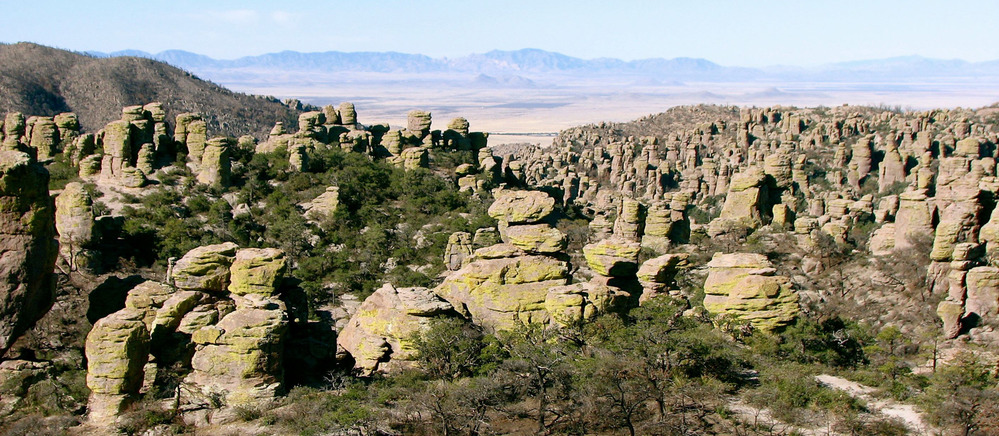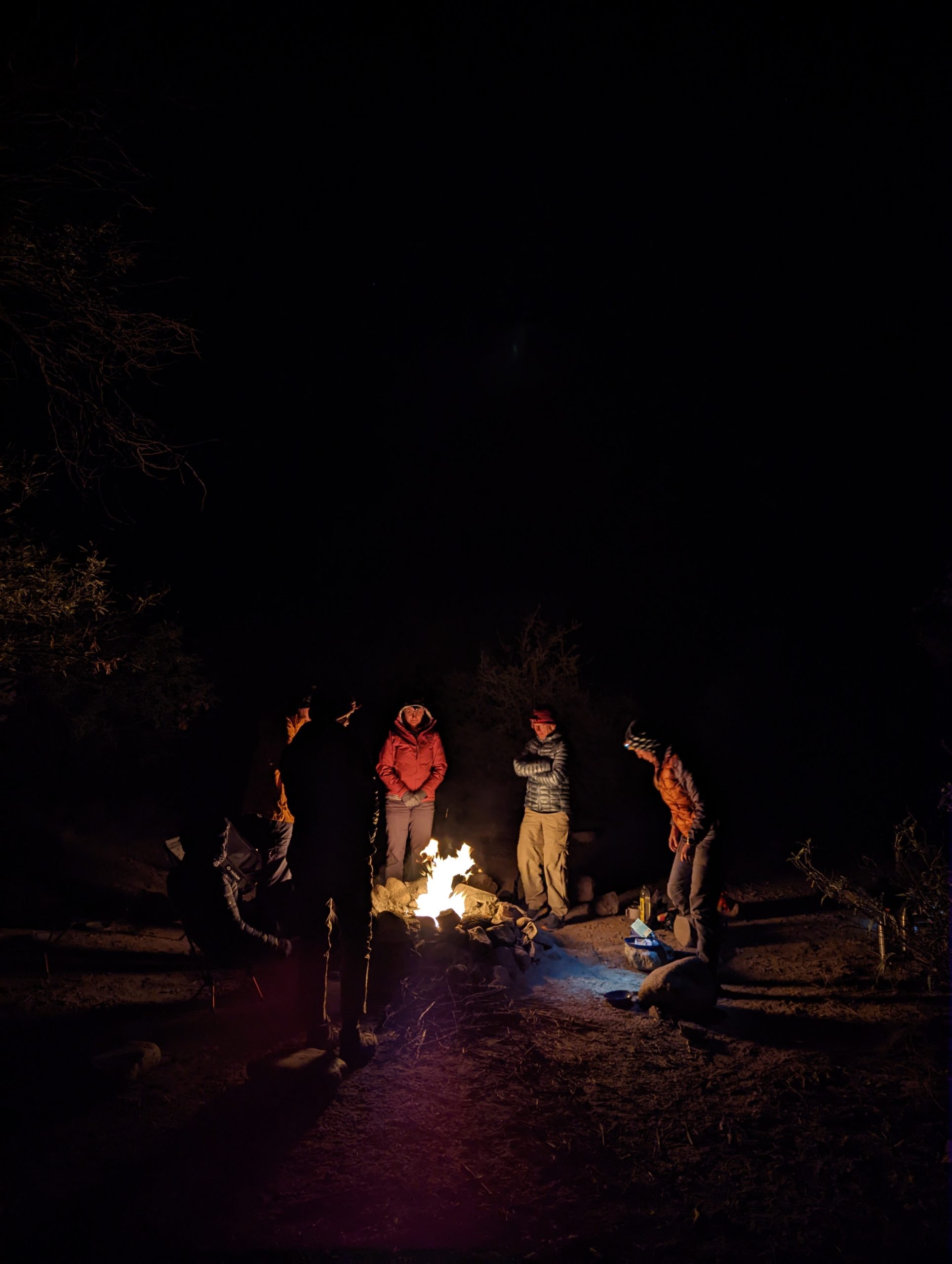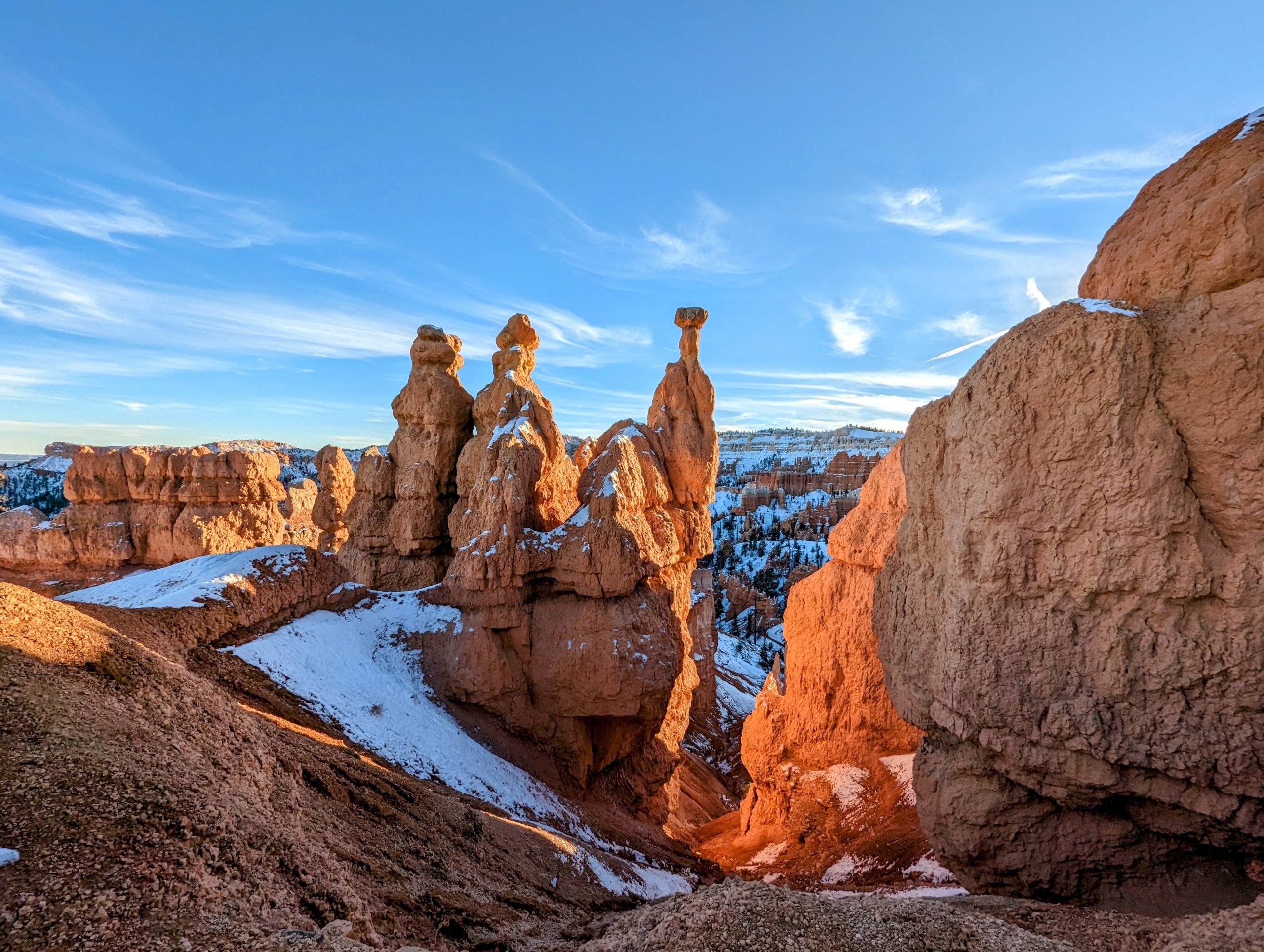This national park road trip will have you cover 4 national parks and 8 additional state parks or national monuments. Covering three states (Texas, New Mexico, and Arizona), this the best way to cross 4 amazing southwestern national parks off of your bucket list.
Trip Overview
This itinerary is designed to start in Dallas and end in Phoenix, but you can flip it around and reorganize the stops in any way that fits your needs best!
BONUS STOP: Monahans Sandhills State Park
The first leg of this national park road trip is going to be the longest. Texas is so large that it takes about seven hours just to drive to the first national park, Carlsbad Caverns. When you want to take a break on your way there, Monahans Sandhills State Park is a great choice. Five and a half hours from Dallas, this state park has a shockingly desert-like landscape. With sand dunes up to 70 feet tall, you can enjoy sand surfing at this state park for an entrance fee of just four dollars per adult. You can also sand surf at White Sands National Park, which means you’ll get more use out of whatever sandboard or sled you bring/rent for the trip!

Carlsbad Caverns National Park
Without any stops, the drive from Dallas to Carlsbad Caverns National Park is usually seven to eight hours long. If you do choose to stop at Monahans Sandhills State Park, you’ll only have two and a half hours more to get to your first national park. Carlsbad Caverns is the only national park on this list that I recommend you make an early reservation for. You cannot enter the cavern itself without a reservation, and you probably won’t be able to get a ticket on the day you arrive.
You can tell by the price ($1 per person) that the National Park Service isn’t just trying to make money off of your visit. In reality, there are only so many people that can safely fit into the cave at one time. Just like Angels Landing in Zion National Park, reservations are required both for your safety and the preservation of the caverns themselves.
Carlsbad Caverns National Park is unique because it is one of the few national parks with a cave complex as the primary attraction. It is famous for being incredibly well-preserved and accessible to visitors. If you fall in love with cave exploration after your visit to Carlsbad Caverns, you may want to visit one of the other nationally protected cave systems in the United States. This includes Mammoth Cave National Park in Kentucky, Timpanogos Cave National Monument in Utah, Craters of the Moon National Monument in Idaho, and Blanchard Springs Caverns in Arkansas.

BONUS STOP: Living Desert Zoo & Gardens State Park
Since you need timed entry tickets to enter Carlsbad Cavern, you probably will have some time to spare before (or after) your cave adventure. Living Desert Zoo & Gardens State Park is just a 30-minute drive north of the national park, and it’s quite a unique place to visit. Unlike most state parks, Living Desert is curated and designed specifically to house wildlife native to the area.
You’ll be able to walk through the park and see over 40 kinds of animals from the Chihuahuan Desert – a collection that doesn’t exist anywhere else in the world. The desert is home to many amazing animals – including black bears, javelinas, Mexican grey wolves, tortoises, and much more. In addition, you’ll see dozens of unique species of plants as well as various landscapes that show up throughout southern New Mexico. Overall, Living Desert Zoo & Gardens State Park is a wonderful place to add to your national park road trip if you truly want to learn about the wildlife local to the area.

Guadalupe Mountains National Park
One hour away from Living Desert Zoo & Gardens State Park, and just 30 minutes away from Carlsbad Caverns National Park, Guadalupe Mountains National Park is the perfect place to camp out after a quick dip into New Mexico. Guadalupe Peak is the highest point in Texas, so I highly recommend you attempt the hike if you have the time. The next three highest points in Texas also stand in this national park: Bush Mountain, Shumard Peak, and Bartlett Peak. All four of these mountaintops rest between 8,500 and 8,800 feet in elevation (about 2,600 meters).
There are historical artifacts and structures scattered all over Guadalupe Mountains National Park. You can still observe agave roasting pits from the Mescalero Apache Tribe’s time in the park, as well as an old stagecoach station and a stone cabin from the 1930s. You can learn more details about the history of the park at the Pine Springs Visitor Center. To go back even further in history, you can use this fossil identification guide to identify the incredibly preserved fossils scattered through the mountain range. Over 250 million years ago, what is now the Guadalupe Mountains used to be underwater. What was preserved and left behind is now known as one of the most well-preserved fossil reefs from the Permian Period of history. You might find some incredibly detailed and well-maintained fossils if you keep your eyes peeled!

BONUS STOP: Hueco Tanks State Park & Historic Site
After visiting Guadalupe Mountains National Park (and maybe even hiking Guadalupe Peak), Hueco Tanks State Park & Historic Site lies perfectly next in your path. A 90-minute drive from Guadalupe Peak, Hueco Tanks is famous for its rock climbing. If you’re interested, I recommend packing or renting climbing gear and try out some of the routes listed on Mountain Project. You can also hike, bird watch, take a tour, or stargaze at this state park – and the entrance fee is only seven dollars per adult! Of course, you can also camp out and stay the night before you set out for White Sands National Park.

White Sands National Park
White Sands National Park has possibly the most beautiful sand dunes in the United States. Made of eroded gypsum, the sand dunes shine a bright and beautiful white. The park is entirely surrounded by the White Sands Missile Range, utilized by the United States government. When missile tests are being conducted, the roads to and from the park will be closed for up to 3 hours, so it might benefit you to check the website before you start this leg of your national park road trip. You will also pass through as U.S. Border Patrol checkpoint on your way to the national park.
With dunes as tall as 60 feet, you’ll want to rent a sand sled or bring your own. You can spend a few hours exploring the park and sledding down the dunes. Alternatively, you can obtain a permit to backcountry camp inside the national park. The permits are available on a first-come, first-served basis and you’ll need to have all of your gear necessary to hike a few miles and camp in the sand. It’s an incredible experience, and you get an amazing view of the stars while camping in the middle of the gorgeous white desert.
There are 5 established hiking trails, but you can also walk pretty much any direction on the sand dunes themselves. You’ll see people everywhere across the desert, sand sledding and taking pictures of the landscape. You can also enjoy the 8-mile scenic drive (out and back) through the park.

BONUS STOP: Rockhound State Park
Just two hours southwest of White Sands National Park lies Rockhound State Park. Not only is this park a classic stop for hikers and campers, but it is well-known for the rocks you can find at the park. Visitors can search for minerals throughout the area, such as quartz, jasper, geodes, onyx, etc. Each visitor can gather up to 15 pounds of rock and minerals from the park. Being able to take anything from a protected area is quite rare, so take advantage of this opportunity if you are interested in rock collecting!

BONUS STOP: Chiricahua National Monument
As you continue west into Arizona, Chiricahua National Monument is absolutely unmissable. The southwest is famous for its unique rock formations, from wind-carved arches to the hoodoos in Bryce Canyon National Park (Utah). Chiricahua National Monument is filled with rock pinnacles, which creates a whimsical and magical feel throughout the area. These rock formations were formed by the erosion of volcanic ash over millions of years. The National Park Service created the monument to protect this space for as long as possible. So be aware that you should not come close to damaging or moving them in any way when you visit. You can camp on-site and hike through the gorgeous “rock garden”. This is a rare experience on your national park road trip!

BONUS STOP: Kartchner Caverns State Park
You might not want to take every single stop on the drive from White Sands to Saguaro National Park. However, you’ll want to catch this one on the way back. Kartchner Caverns State Park, like Carlsbad Caverns National Park, is any cave adventurer’s dream. Although Carlsbad Caverns is much bigger, the Kartchner Caverns rock formations are still growing and developing even now. Kartchner Caverns is also home to the largest stalactite in the United States (and the third-largest stalactite in the world). The caverns were first discovered in 1974 but kept a secret for 14 years after the discovery. Determined to maintain the caverns and prevent any chance of degradation, the state of Arizona spent $28 million on technology that would protect the natural formations while allowing visitors to explore the area at the same time.

Saguaro National Park
Want to find the largest cacti in the country? Try Tucson, Arizona. The giant saguaro is a famous kind of cactus, and if you see them you instantly think of the Wild West, cowboys, and tumbleweeds. These plants are only found in a small area of the United States, and they’re protected within Saguaro National Park.
If you’ve never seen a saguaro cactus in person before, it’ll take you a while to get over how amazing they are. I remember constantly looking up in awe as I hiked by dozens of these towering spikey giants. Their arms grow as they age, so you can tell the oldest cacti by how many arms they have. They grow so slowly that it usually takes over 50 years for them to start growing their first arms. Saguaros can live up to 150 to 200 years of age, so be careful not to damage or disturb them as you pass by.

BONUS STOP: Picacho Peak State Park
Picacho Peak State Park lies perfectly between Tucson and Phoenix, which makes it a great stop on your road trip. The hike up to the peak is only 4 miles (round trip), but difficult. It is so strenuous that cables and catwalks were even installed on the trail to make it less dangerous. This makes it one of the few via ferrata hikes in the United States. You may need gloves and via ferrata equipment if you want to try out this aspect of the trail. The park is extremely well-known for the wildflowers that appear each spring, so make sure to stop here if your national park road trip lands sometime between February and April.

BONUS STOP: Lost Dutchman State Park
Ever heard of the Lost Dutchman’s Gold Mine? According to legend, it is hidden somewhere in the Superstition Mountains – and perhaps even in Lost Dutchman State Park. About 40 miles east of Phoenix, this park is designed for day trips and weekend trips out of Phoenix and only takes 45 minutes to drive from city central. Not only does Arizona State Parks and Trails maintain this area, but they also hold programs and events in the park almost every month. Make sure to check the website for any interesting events going on when you plan your visit!




